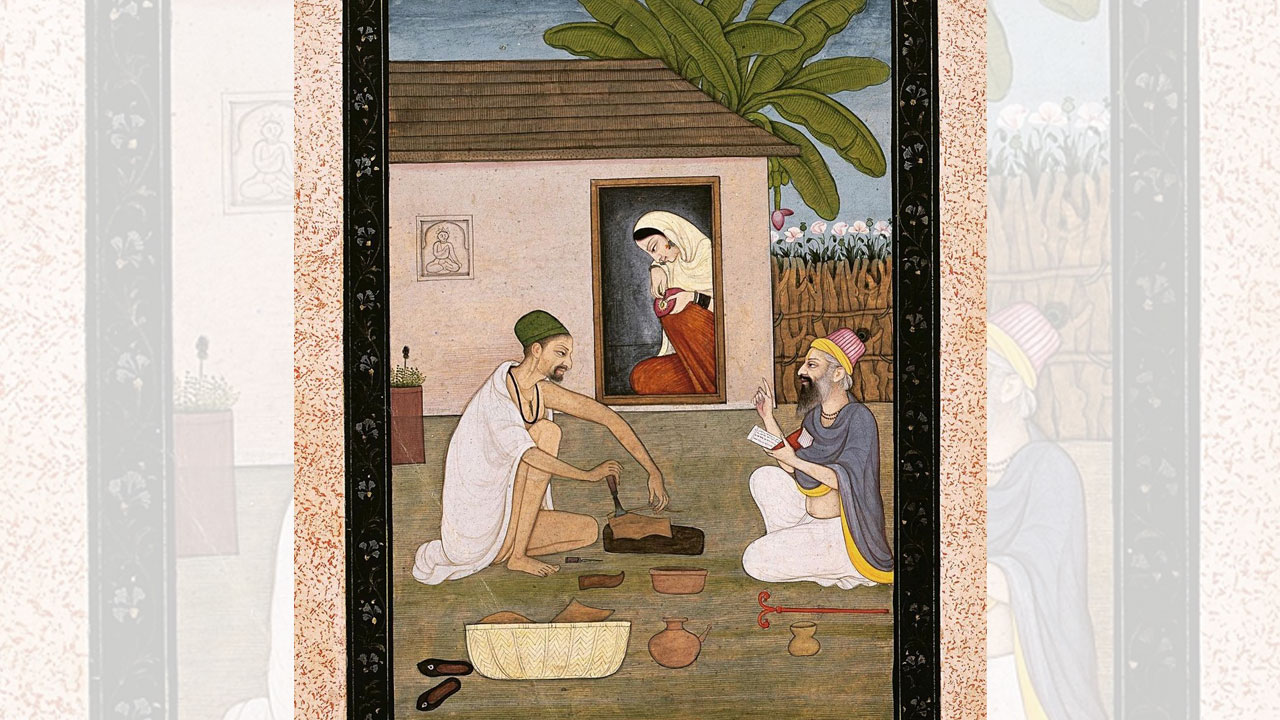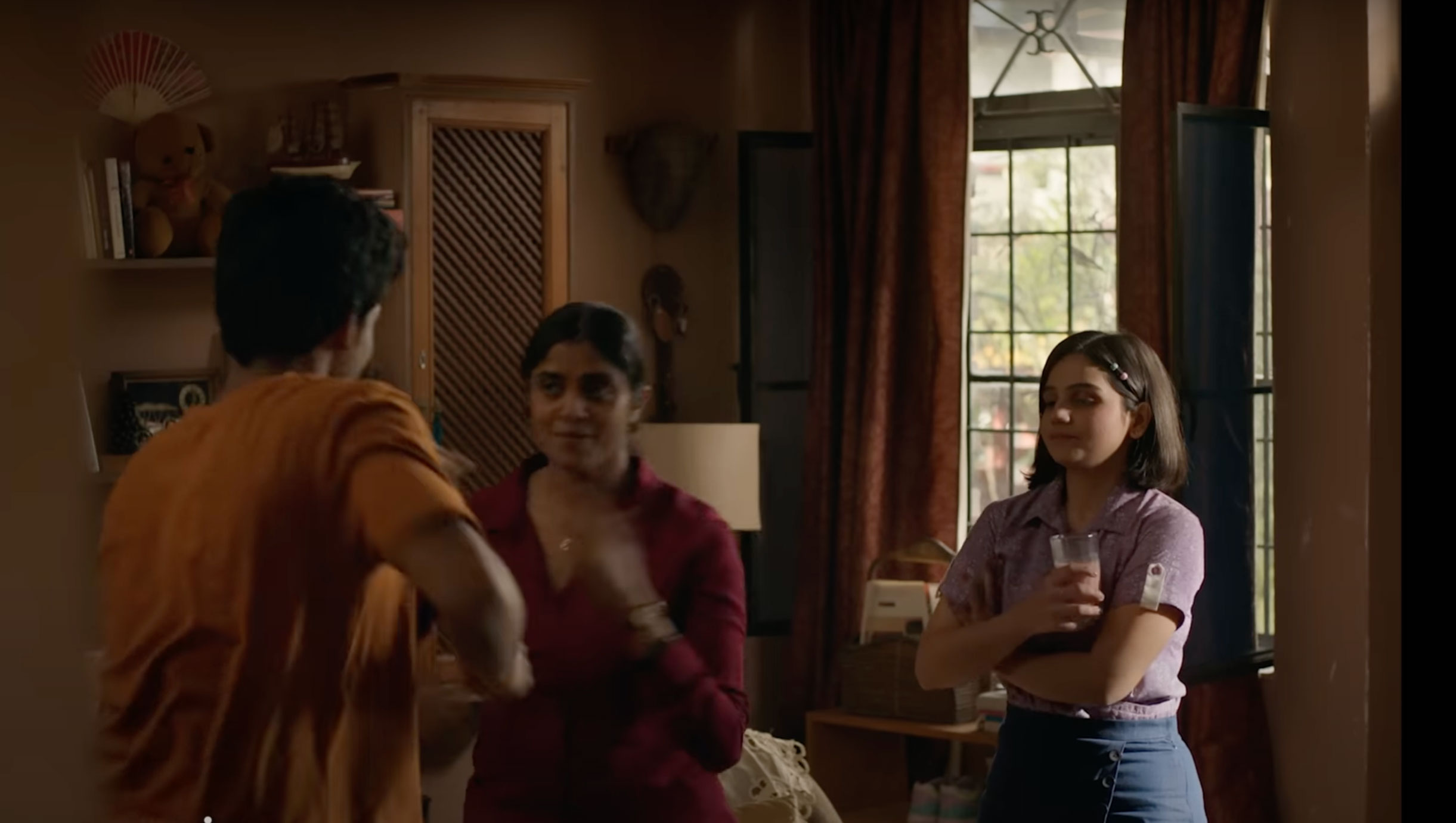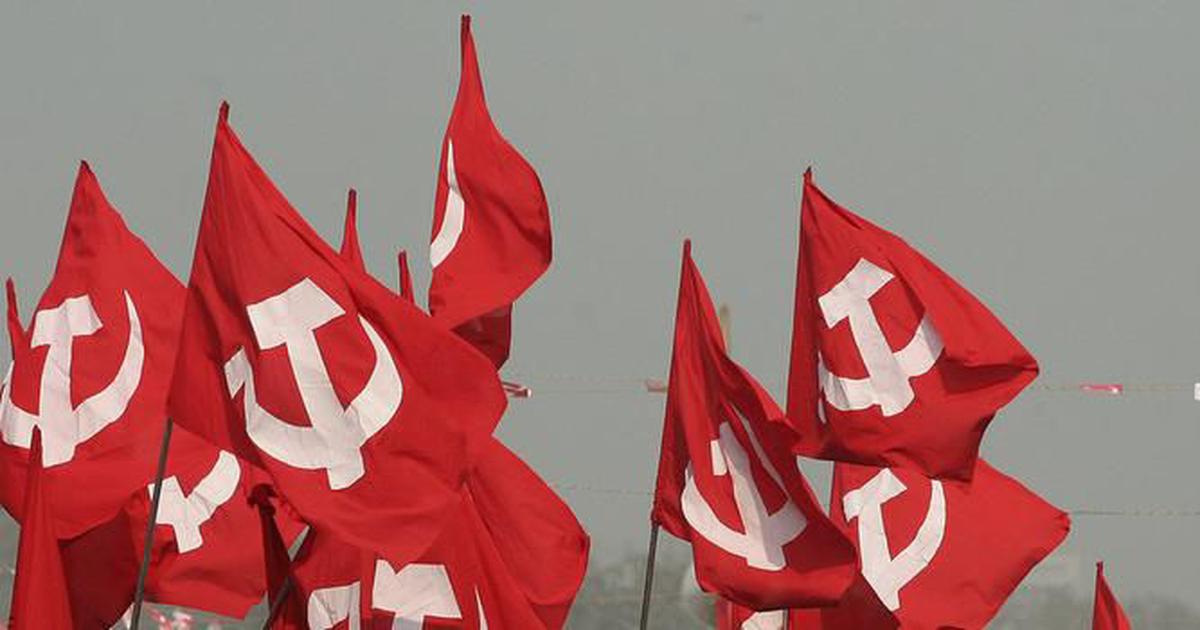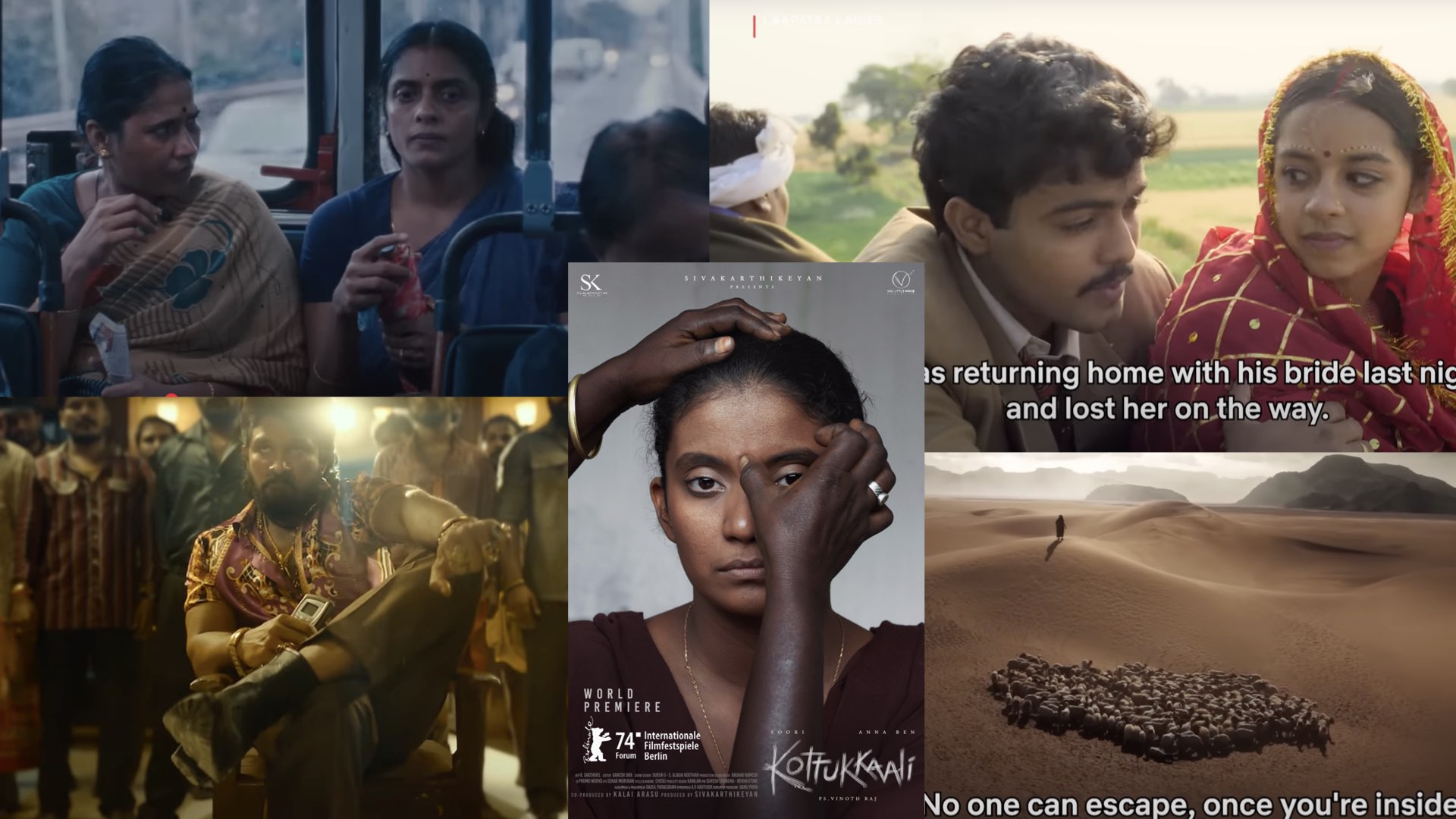Ethics in human form, the sacred son of the sublime, the compassionate Nabi the pearl or jewel …
Narayana Guru, Ten Verses in Compassion (Anukampa Dasakam)
When the National Education Policy 2020 attempts to privatize, corporatize, saffronize and monopolize Indian education and destroy its secular, democratic and ethical foundations enshrined in the Constitution we remember Narayana Guru, who taught us a century ago that a modern education is the way to liberation and enlightenment. He also appealed to the people at the bottom of the caste system to unite and organize so that there is an empowerment of the oppressed. It was Guru’s beloved disciple Sahodaran who introduced Ambedkar to Kerala. There is an echo in Ambedkar’s “educate, agitate and organize” motto of the great message of modern education and social organization by Guru. It is also the reinstating of the Buddha’s own triple gems and asylums: Buddham, Dhammam and Sangham (Enlightenment, Ethics and Organization). Narayana Guru is often called the Kerala Buddha by his poet disciples like Muloor, Karupan and Sahodaran as he iconoclastically renewed language, culture, society and polity in Kerala and envisioned a new Kerala modernity and renaissance that was a model to the whole world. However, a hundred years later those modern democratic ideals are in peril and these are testing times for Kerala’s modernity, as we saw during the riots in 2018 against the Supreme Court’s decision to allow women of menstruating age to enter the Sabarimala’s Ayyappa Temple.
Ironically, even women from the conservative caste Hindu quarters joined the protests against the Supreme Court decision and in support of the belief that they themselves pollute brahmanical temples. Perhaps, they are not aware that the Sabrimala Temple is of Buddhist and Bahujan antiquity and women of all ages and people across faiths were welcome there until recently and a legend connects Ayyappa to the Muslim figure Vavar (Rajeev 2018). Another irony was that the Sabarimala protests were mostly led by dominant Shudras under the banner of the Nair Service Society, which had allied with the Rashtriya Swayamsevak Sangh (Ilaiah 2018; Jose 2019).
The 2018 riots were thus a harsh reminder that casteist patriarchy is coming back with a vengeance in alliance with various cultural nationalisms in various parts of the country, including Kerala, by violently Hinduizing the secular, sacred and public places. We have seen the Manusmriti pitted against the Constitution earlier too in the anti-Mandal riots of the twice-born that shook the country in early 1990s (Omvedt 1990; Sekher 2008: 25-38).
The violence over the Sabarimala Temple entry rights didn’t happen out of the blue. This moment had been in the making for some time. The forces of cultural nationalism and monopoly have been operating even through the Left in Kerala to sabotage Indian Constitution and its social democracy paradigm. The Purana Parayanas or epic narrations and recitals by pandits, misusing the Left, democratic platforms and made possible by the taxpayer’s money, prepared the ground for this eruption of violence.
It was again Guru who gave the prudent warning against “the killing gods” of Hinduism in Jeevakarunya Panchakam, the Five Verses in Mercy to Life, that the killer has no virtue however “good or great” he is. Armed with this teaching, Sahodaran confronted Gandhi when he came to Kerala to visit Guru. Gandhi had no clear answer to his question on Lord Krishna’s serial killings. Sahodaran also rejected the Ram slogan of Madan Mohan Malaviya in 1929 at Kottayam Tirunakkara because his guru had proclaimed in 1914 itself that the Hindus rule by the Smritis and if it was the time of Ram he would have met with the fate of Sambuka, as no Sudra or Atisudra (Avarna) like him was allowed to pursue knowledge and the spiritual path of asceticism or Sanyasam. Unfortunately, the people have forgotten about these social and religious reforms and events that created modern Kerala (Bhaskaranunny 2000; 2005). This alarming situation of depoliticization and collective amnesia or hegemonic erasure in matters of history and culture is the result of Hinduization of education, media and the public sphere. Guru and Sahodaran’s rational writings, except a few early prayer songs, still don’t figure in Kerala syllabuses.
What a democratic government can do at a time like this is to reintroduce Guru, who created modern Kerala through his rational, radical conversations and historic messages, and to acknowledge the reality of social graded inequality (caste inequality) instead of papering it over with economic inequality.
The reality of caste and gender exclusions and inequalities in society are not adequately addressed in the media or discussed in academia (Sekher 2008: 12-31). Any reference to the Buddhist cultural history of Kerala before 8th century AD is taboo, too, and is being erased. Instead a fabricated Hindu elitist history, a brahmanical aesthetics and hegemonic caste Hindu culture are imposed from the top as the norm through pedagogy and the media. This manufactured hegemonic consent and consensus go on to become common sense as well. The academia and media in Kerala are celebrating the Hindu Sanskritic epics time and again and suppressing the South Indian (Tamil) epics like Manimekhalai or Silapatikaram as they are Buddhist and Jain or Dravidian in ethics, aesthetics and themes.
As Professor Ilamkulam Kunjan Pillai, the pioneer in Kerala cultural history, has illustrated, Kerala was Hinduized through the “Mavarata Pattatanams” or the pedantic rhetorical displays on the Mahabharata in the Middle Ages by the new professorial fellow converts to Hinduism, known as Pattars or Bhattars (Ilamkulam 2003: 156). Similar Ramayana-Mahabharata scholarship and reiterations today entertain and deceive the public as the Right and Left compete for the Hindu epic Purana legacy. A Nair Hindu woman called Mani Pillai hurled a casteist slur at the chief minister in public as he tried to implement the Supreme Court verdict for gender justice at Sabarimala. The “gender advisor” to the chief minister, Dr T.K. Anandi, another caste Hindu elite woman, wrote in the January 2019 issue of the Janapadham magazine published by the Kerala government’s Public Relations Department that the infamous breast tax in the Travancore kingdom was an economic issue and not a social issue, her intent being to legitimize economic determinism and “economic reservations”. She highlighted the contributions of Namputiri (Nambudiri) women and belittled and erased the important voices of early 19th-century martyrs for women’s liberation like Nangeli, the Ezhava woman who sacrificed her life to end the infamous breast-tax (Jose 2017). In an earlier speech, she had said that in the early 19th century Nangeli was the name of a privileged Namputiri or other caste Hindu woman and not that of a Avarna woman. Elite feminists like the chief minister’s gender advisor dismiss as myths the histories of Nangeli or the Avarna women who were stripped of their loincloth at Patiyur during the Achipudava struggle led by Arattupuzha Velayudha Panicker (1825-1874).

With such feminist sociologists or historians advising the chief minister, anybody can guess the severity of the state of affairs in Kerala.
While the reality of caste in the present is not spoken of, the reality of caste in the past does not find a mention in the textbooks. Recently, references to struggles against the caste system and brahmanical patriarchy have been left out of NCERT and CBSE highschool history textbooks, including those in Jeevita Samaram (Life struggle), the autobiography of C. Kesavan, another disciple of Guru and about the Nadar women, who were fighting for the right to wear breast cloth in public, being violently and shamelessly attacked and stripped by caste Hindu henchmen in Nanjinad region of Travancore, (Ameerudheen 2019). The torture and humiliating murder of Nadar women like Sakuntaladevi or Yesuadial near Kalkulam by caste Hindu goons are carefully forgotten or evaded in public articulations and debates.
The real history of Kerala before the Middle Ages, including the Buddhist enlightened and egalitarian legacies, which forms the foundation of Kerala culture and society have been completely erased and a brahmanical understanding of Kerala’s past has been established and propagated (Sekher 2018). The Sabarimala Temple riots and hurling of casteist abuse at the chief minister were the culmination of the depoliticization of the people and erasure of public memory. A keen understanding of Kerala and its socio-historic formations is essential in these times when a sense of history and reality is either lacking or is being erased by dominant ideological forces and hegemonic discourses. The linkages between modern Kerala and its renaissance and the ancient egalitarian and ethical heritage of Buddhism need to be realized and recognized in any debate on Kerala and its composite ethical culture (Omvedt 2005; Sekher 2018). The search for the roots of Kerala and its modernity may take us to Mohammad, Jesus and even the Buddha as the Anukampa Dasakam or the Ten Verses in Compassion of Guru reminds us. The roots of Kerala modernity and renaissance are in its historic dialogues and interactions with the world. This cosmopolitanism and secularism of Guru must be brought into the academia and media through his own dialogues with disciples and the writings of the disciples.
References
Aloysius, G.(1998). Religion as Emancipatory Identity: A Buddhist Movement Among Tamils under Colonialism. New Delhi: New Age International.
—-. (1997). Nationalism without a Nation in India. New Delhi: Oxford University Press.
Ambedkar, B.R.(1957). Buddha and his Dhamma. Bombay: SCP.
Ameerudheen, T.A.(2019). “NCERT decision to remove chapter on caste struggle in Kerala from history textbook draws criticism.” Scroll.in (2019). Accessed on 12 September 2020 from https://scroll.in/article/917353/ncert-decision-to-remove-chapter-on-caste-struggle-in-kerala-from-history-textbook-draws-criticism
Appachan, Poykayil.(2008). Unknown Subjects: Songs of Poykayil Appachan. [Trans. Ajay Sekher. Ed. V.V. Swamy and E.V. Anil.] Kottayam: IPRDS.
Ayyappan, K.(1990). Sahodaranayyappante Padyakritikal. Thrissur: Kerala Sahitya Akademi.
Balakrishnan, P.K.(1986). Jativyavstitiyum Kerala Charithravum. Kottayam: NBS.
—. Ed. (2000). Narayana Guru. Thrissur: Kerala Sahitya Akademi.
—.(2010). Tipu Sultan. Kottayam: DCB.
Bhaskaran, T. (2015). Sri Narayanaguru Vaikhari. Perumbavoor: Kunnathunadu SNDP Union.
Bhaskaranunny, P.(1992). Pattiniyum Avarodhavum. Trivandrum: Kerala Bhasha Institute.
—.(2000). Pathombatam Nutandile Keralam. Thrissur: Kerala Sahitya Akademi.
—.(2005). Keralam Irupatam Ntandinte Arambhatil. Thrissur: Kerala Sahitya Akademi.
Chentharassery, T.H.P.(1983). Poykayil Sri Kumara Gurudevan. Trivandrum: Navodhanam.
Darwin, J.(2012). Nadunartiya Nadar Porattangal. Trivandrum: Chinta.
—.(2015). Oru Nashta Janatayum Rajyavum. Trivandrum: Mythri.
Dharmateerthar, J.(1992). History of Hindu Imperialism. Chennai: Dalit Educational Centre. Also available online at www.archive.org
Gandhi, M.K.(1962). Varnasramadharma. Bombay: Navjivan.
Geetha, V. and S.V. Rajadurai.(2002). Towards a Non-Brahmin Millennium: Pandit Iyothee Thass to Periyar. Calcutta: Samya.
Gopalakrishnan, P.K.(2008). Keralathinte Samskarika Charithram. Trivandrum: Kerala Bhasha Institute.
Gramsci, Antonio.(1989). Prison Notebooks. [Ed. & Trans. Hoare and Smith]. New York: International Publishers.
Guru, Narayana.(2006). Complete Works. [Trans. Muni Narayana Prasad]. New Delhi: NBT.
Ilaiah, Kancha.(2018). “Sabarimala Temple Entry: All Sudras Must Oppose NSS Manuvadam.” Countercurrents.org (2018). Accessed on 12 September 2020 from https://countercurrents.org/2018/10/18/shabarimala-temple-entry-all-shudras-must-oppose-nss-manuvadam/
—.(2018). “Where are the Sudras? Why the Sudras are Lost in Today’s India.” The Caravan, October 1, 2018. Also available online at https://caravanmagazine.in/caste/why-the-shudras-are-lost-in-today-india
Ilamkulam.(2003). Ilamkulam Kunjanpillayute Charitra Kritikal. [Ed. N. Sam]. Trivandrum: University of Kerala, 2003.
Jeffrey, Robin.(1976). The Decline of Nair Dominance: Society and Politics in Travancore: 1847-1908. New York: Macmillan.
Jose, N.K.(2019). Sudra Lahala. Vaikom: Hobby Books.
—.(2017). Mulachiparambu. Hobby Books.
Pandian, M.S.S.(2006). Brahmin and Non-Brahmin: The Genealogies of the Tamil Political Present. New Delhi: Permanent Black.
—.(1990).“Church and Social Change in South Travancore.” Economic & Political Weekly, 25 (1990): 1767-68.
—.(1992).“Meaning of Colonialism and Nationalism: An Essay on Vaikundhaswamy Cult.” Studies in History, 8 (1992): 177-92.
Omvedt, Gail.(2005). Buddhism in India: Challenging Brahmanism and Caste. New Delhi: Sage.
—. (1990).“Twice-born Riots against Democracy”. Economic and Political Weekly. 25, 39, 29 Sep, 1990. Accessed on 13 September 2020 from https://www.epw.in/journal/1990/39/perspectives/twice-born-riot-against-democracy.html
Rajeev, Lekshmi (2018).“Local religious rituals were crushed by Brahmins in Sabarimala”. (Interview with Ullekh N. P.). Open magazine. 28 Oct 2018. Also available online at http://www.openthemagazine.com/article/cover-story/lekshmy-rajeev-local-religious-rituals-were-crushed-by-brahmins-in-sabarimala
Reghu, J. (2006).Hindu Colonialisavum Desarashtravum. Kottayam: Subject and Language Press.
—- (Ed). (2015).Khar Vapasi. Kottayam: D C B.
—. (2018).Hindutva Fascism: Charitravum Sidhantavum. Trivandrum: Kerala Bhasha Institute.
Rodriguez, Valerian (Ed). (2002).The Essential Writings of B R Ambedkar. New Delhi: Oxford U P.
Sanal Mohan, P. (2015).Modernity of Slavery: Struggles against Caste Inequality in Colonial Kerala. New Delhi: Oxford University Press.
Satyaprakasam, M.(2003). Sarasakavi Muloor. Trivandrum: Department of Culture, Government of Kerala.
Shaji, K. N.(2002). Narayanaguru: Jeevitam, Kritikal, Darsanam. Thrissur: Current.
Sekher, Ajay.(2012). Sahodaran Ayyappan: Towards a Democratic Future. Calicut: Other.
—. (2008).Representing the Margin: Caste and Gender in Indian Fiction. Delhi: Kalpaz/Gyan.
—.(2003).“Older than the Church: Caste and Christianity in the God of Small Things.” Economic and Political Weekly 38, 33 (Aug. 16-22, 2003): 3445-3449. Accessed on 13 September 2020 from JSTOR, www.jstor.org/stable/4413900.
—.(2016).Nanuguruvinte Atmasahodaryavum Matetara Bahuswara Darsanavum. Trivandrum: Mythri.
—. (2015).Dr B.R. Ambedkar. Kottayam: SPCS.
— (Ed).(2017).Kerala Navodhanam: Putuvayanakal. With S.R. Chandramohanan. Trivandrum: Raven.
—. (2018). Putan Keralam: Kerala Samskaratinte Bauddha Atitara. Trivandrum: Kerala Bhasha Institute.
Sugathan, K. (2008).Buddhanum Nanuguruvum. Calicut: Matrubhumi.
—. (2016).Guruvinte Charitram. Calicut: Sreenarayana Club.
Velayudhan, Kottukoyikal.(2015). Sri Narayana Guru: Tatvopadesangalum Dharmasasanakalum. Trivandrum: Kerala Bhasha Institute.
(Copy-editing: Anil)
Forward Press also publishes books on Bahujan issues. Forward Press Books sheds light on the widespread problems as well as the finer aspects of Bahujan (Dalit, OBC, Adivasi, Nomadic, Pasmanda) society, culture, literature and politics. Contact us for a list of FP Books’ titles and to order. Mobile: +917827427311, Email: info@forwardmagazine.in)
The titles from Forward Press Books are also available on Kindle and these e-books cost less than their print versions. Browse and buy:
The Case for Bahujan Literature
Dalit Panthers: An Authoritative History







